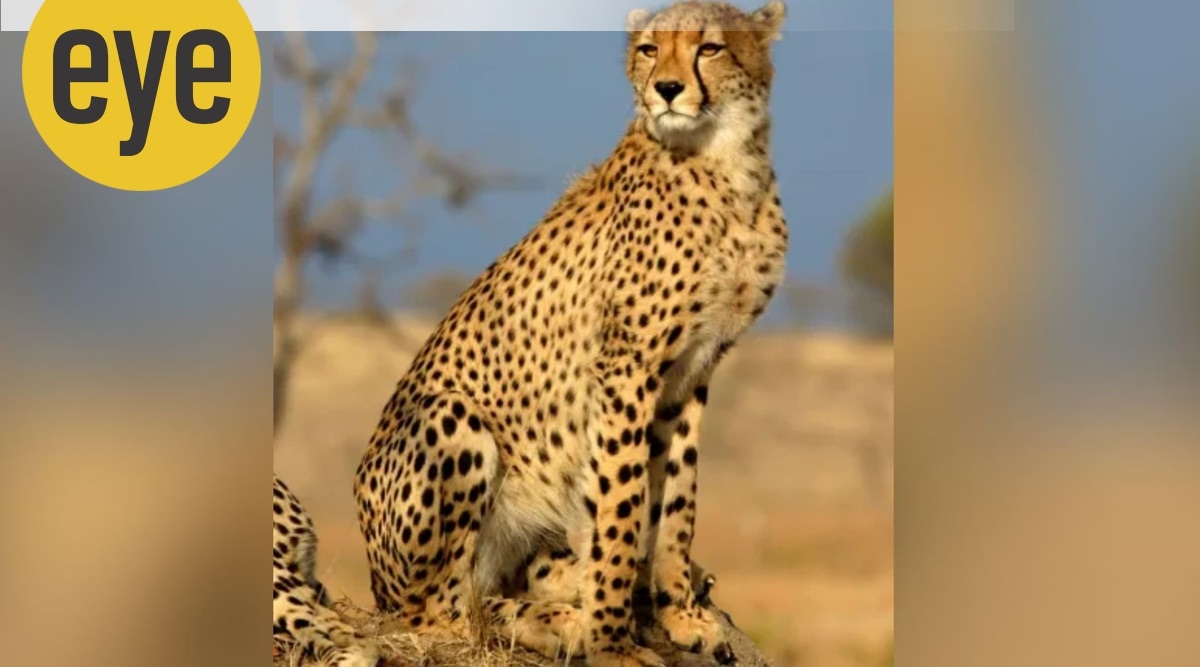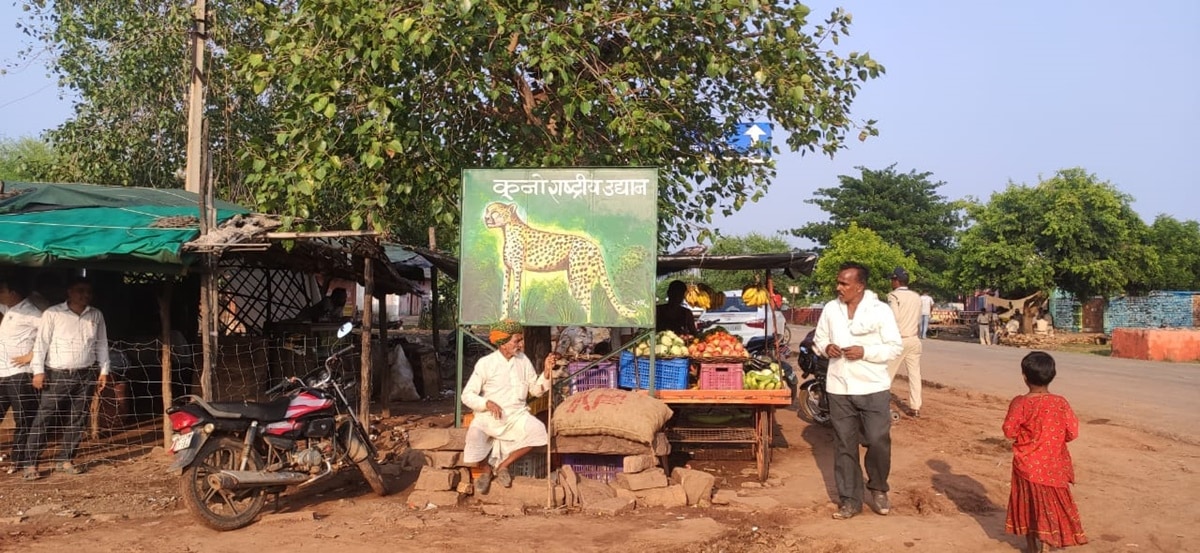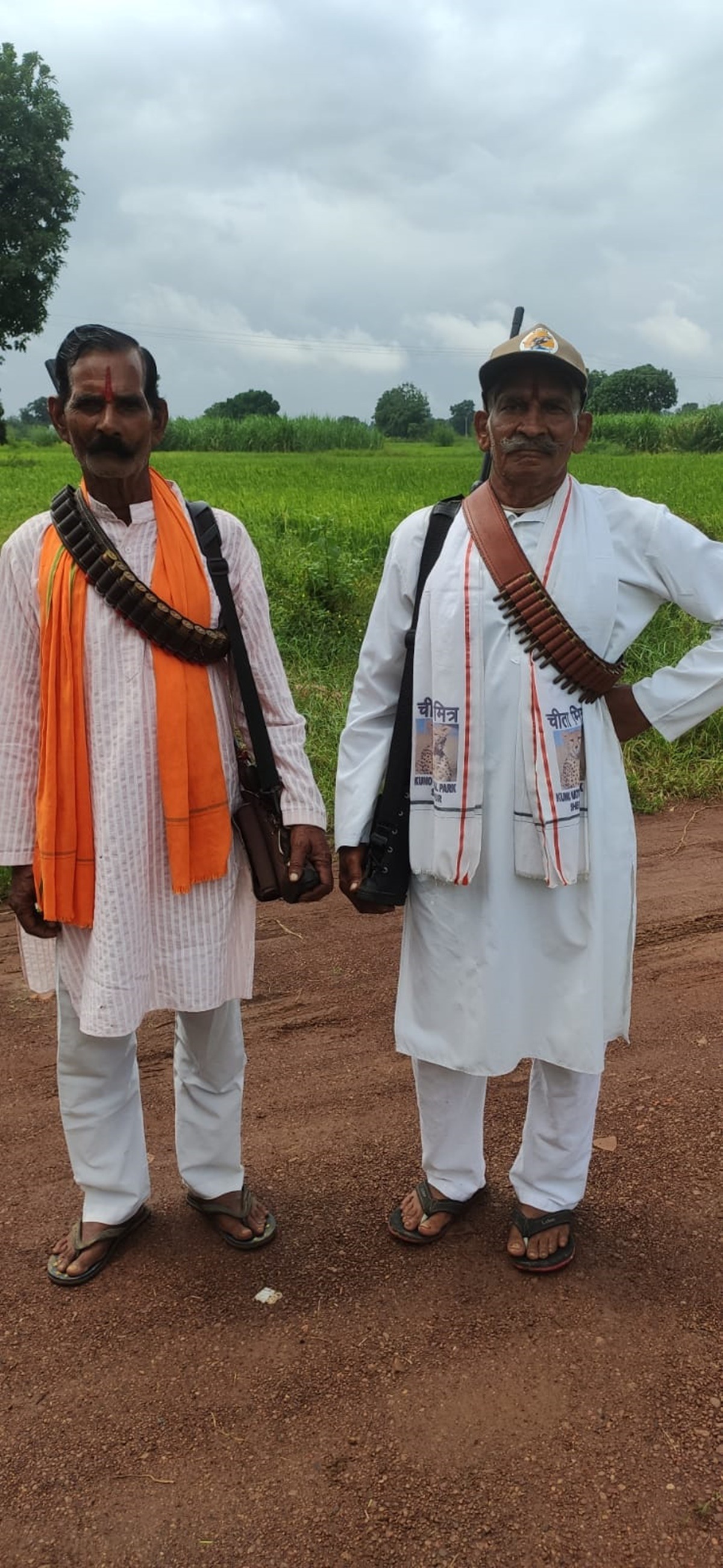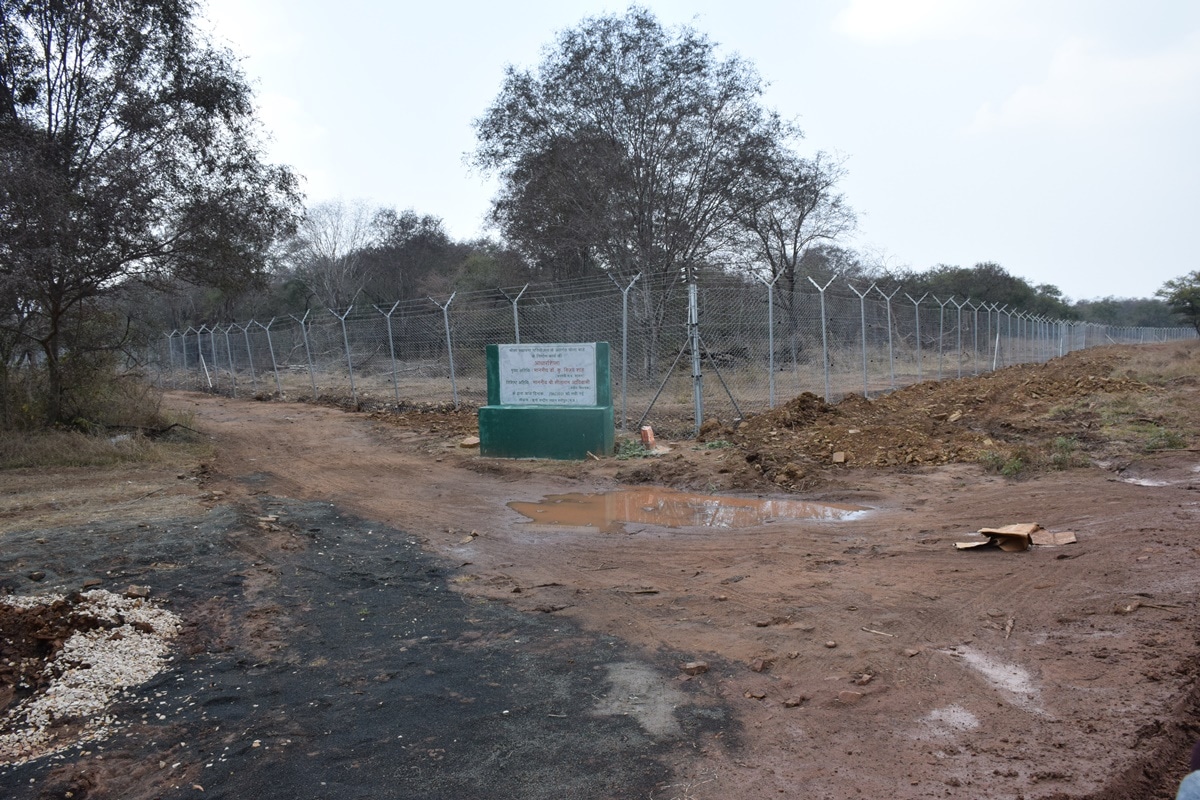 The Namibian cheetahs will first be put into a quarantine enclosure for a month before being moved into a five sq km-long enclosure, and then, finally, let out in the open jungle (Photo source: Wikimedia Commons)
The Namibian cheetahs will first be put into a quarantine enclosure for a month before being moved into a five sq km-long enclosure, and then, finally, let out in the open jungle (Photo source: Wikimedia Commons)Wearing a gamcha around his neck that has ‘Cheetah Mitra’ embossed on it alongside a photo of the big cat, Lala Ram Adivasi sits amongst a group of villagers at Sesaipura gram panchayat, about 20 km away from Tiktoli entry gate of Kuno-Palpur National Park, trying to lay out the difference between a lion, a leopard and a cheetah.
The setting sun peeps through the dark monsoon clouds, casting a golden glow over the picturesque deciduous forest ranges of Kuno National Park. A handful of villagers, after finishing their day’s work, gather around Lala Ram at the tea shop near the panchayat office. On September 17, the Namibian cheetahs will first be put into a quarantine enclosure for a month before being moved into a five sq km-long enclosure, and then, finally, let out in the open jungle. For some villagers, the cheetah is a baghera, for others its bilai nahar, but for most it’s still a sher, a babri sher. But Lala Ram is here to bust some myths. “Babri sher is the biggest, followed by baghera and then comes bilai nahar, which is small in height but longer in length. What is being brought is a bilai nahar, also known as cheetah. Baghera or leopard has big dark spots covering even his face, but bilai nahar has small spots and, unlike baghera, it has black lines running from under both its eyes to his mouth on his face,” says Lala Ram pointing to the picture of the cheetah on his gamcha.
 Posters announcing the arrival of the cheetahs in Kuno (Credit: Shahroz Khan Afridi)
Posters announcing the arrival of the cheetahs in Kuno (Credit: Shahroz Khan Afridi) As Lala Ram finishes, forest guard Krisnakant Pathak chimes in with more information: “The cheetah is the fastest running animal in the world. It can go from 0-80 km in five seconds and run as fast as 120 km per hour.” He throws in some nifty maths to elaborate it further. “Yahan se Sheopur collector office hai 60 km par, toh ye samajh lijiye ki yahan se collector office ho ke wapas aa sakta hai cheetah ek ghante mein (The collector’s office is 60 km from here. So, the cheetah can cover the distance to and from the collector’s office in an hour).” Listening to Pathak, a villager remarks, “Even our bus doesn’t run this fast”. With this, the group bursts into laughter.
There is both confusion and excitement as the tiny hamlets of Sheopur with a sizeable population of Particularly Vulnerable Tribal Groups (PVTG) Sehariya tribes wait for the arrival of the first batch of eight cheetahs flown down nearly 9,000 km away from Namibia, as a part of an intercontinental cheetah translocation.
The 20 km patch of the narrow single road leading up to Kuno National Park from Sesaipura police station is teeming with security vans, buses filled with special police forces and a serpentine cavalcade. Nearly 400 Cheetah Mitras like Lala Ram have been trained by forest officials to help the villagers get familiar with the new animal that will be part of their landscape. “If you ever spot bilai nahar, don’t mistake it with a baghera or a sher. Bilai nahar does not attack humans and we must not attack it. You should inform us and we will take it back to the forest,” concludes Lala Ram.
To take the message of co-existence to the villagers, the district administration has also roped in the community radio channel 90.8 MHz which has been in use in Sheopur since 2012 for creating awareness of various government schemes. With erratic electricity and not many who can afford television sets, the community radio has been a reliable source of information for many villagers in Sheopur. “Villagers, especially those taking their cattle into the jungles, often tune into our channel on their mobile phones. As these are the people who venture out into the jungles to graze their cattle, the radio is turning out to be a handy tool to get the message to them,” says radio programme co-ordinator Rohit Kumar.
If making the villagers aware is one concern, another bigger worry is protecting the big cats from c. Taking this into consideration, Madhya Pradesh’s forest department has roped in a unique Cheetah Mitra, a dreaded former dacoit, with over 91-cases of murder and kidnapping to his name before he surrendered in 1984.
 Ramesh Singh Sikharwar, popularly known as ‘Mukhiyaji, a dreaded former dacoit is now working as Cheetah Mitra (Credit: Shahroz Khan Afridi)
Ramesh Singh Sikharwar, popularly known as ‘Mukhiyaji, a dreaded former dacoit is now working as Cheetah Mitra (Credit: Shahroz Khan Afridi) Armed with a licensed rifle, the 72-year-old Ramesh Singh Sikharwar, popularly known as ‘Mukhiyaji’, a resident of Lehroni village in Karhal block, rides on his motorcycle to meet local residents with a history of poaching cheetals, black bucks and other smaller animals. “Most of these poachers belong to the Mogiya community and have settled around Kuno. I met them and have specifically told them there should be no harm caused to any animals or else I will not think twice to use my rifle again. I have also requested the forest department to confiscate all their weapons,” says Sikharwar.
Forest officials have also vaccinated a large number of dogs, cows and buffaloes against rabies. “These black dogs are the cheetah’s favourite prey. It has often been seen that in most of the houses where there have been tiger attacks, it has been for a dog. To ensure that our cheetahs are not infected even if they wander into any village, these cattle and dogs have been vaccinated,” said a forest personnel, who was involved in the vaccination drive, requesting anonymity.
But for many villagers, there is also fear and scepticism over possible loss of life and livelihood. For Chandrakant Bhadoriya, a primary school teacher in a tiny hamlet located about four kilometre inside the jungle, where a handful of adivasis had settled in 1995, the cheetahs are a cause of concern. A resident of Lehroni village, Bhadoriya takes a shorter route walking for about four km inside the jungle to teach a class of 16 students. “Ab jab ye sarkar ki yojna hai toh kaun kuch keh sakta hai, par man mein darr toh lagta hai. Jab ap jungle se jaate hai, agar ye janwar saamne aa jaega toh aap kya kar lenge akele (Now that it’s a government scheme, what can one say. But one feels scared. When you are passing through the forest, if this beast comes in front of you, what can one do on one’s own)?,” says Bhadoriya.
 Inside the Kuno forest (Credit: Shahroz Khan Afridi)
Inside the Kuno forest (Credit: Shahroz Khan Afridi) Between 1998 to 2003, after Kuno-Palpur was declared as a sanctuary in 1981 for introduction of Asiatic lions from Gujrat’s Gir National Park, residents of 24 villages were relocated. Promises made to them of arable farming land have remained unfulfilled. “Many of these relocated villagers sold off those unfertile lands at cheap rates and settled in the eight villages surrounding Kuno. So, when the cheetah introduction plan began, villagers were worried that they will once again be asked to move. People here have co-existed with leopards. It is not so much the cheetah that is their fear but it’s the loss of their homes. We had to call a team of forest officers and hold several rounds of meeting to pacify the villagers that no one will be asked to move out,” says Bharat Singh Gurjar, former janpad member of Morawan in Sesaipura.
 Foundation stone laid by forest minister for construction of enclosure for Project Cheetah (Credit: Shahroz Khan Afridi)
Foundation stone laid by forest minister for construction of enclosure for Project Cheetah (Credit: Shahroz Khan Afridi) But there are some, like Ram Lakhan, a resident of Uchi Rahron in Karhal block, who are hopeful that the introduction of cheetahs will usher in development in the form of increased tourism. The last government recruitment in Sheopur happened over a decade ago when his brother reportedly got a job as a district clerk. But now, he is hopeful that the arrival of cheetahs would create employment opportunities for the next generation. Already land prices have seen an uptick, especially along the main roads, with several hotels investing in properties. Jungle Resort, the sole luxurious resort in Sheopur district with 22 rooms, has begun receiving calls from wildlife enthusiasts for bookings between October and December. Its owner Jignesh Jain says, “The tourists want to know every detail, including the vehicle that will be permitted inside the National Park. But as we haven’t received any clarity from forest officials so far, it is hard to tell them.” Lakhan has the last word: “Cheetah laao yaa sher, isse kuch nuksaan hoga toh kuch fayda bhi. Yahi niyam hota hai. Hamare baccho ko naukri mil jae toh hum sab jaanwaron ko jhel lenge (Whether you get tigers or cheetahs, there will be some losses, but some gains, too. If our children get jobs, we’ll gladly co-exist with the animals),” he says, with a smile.